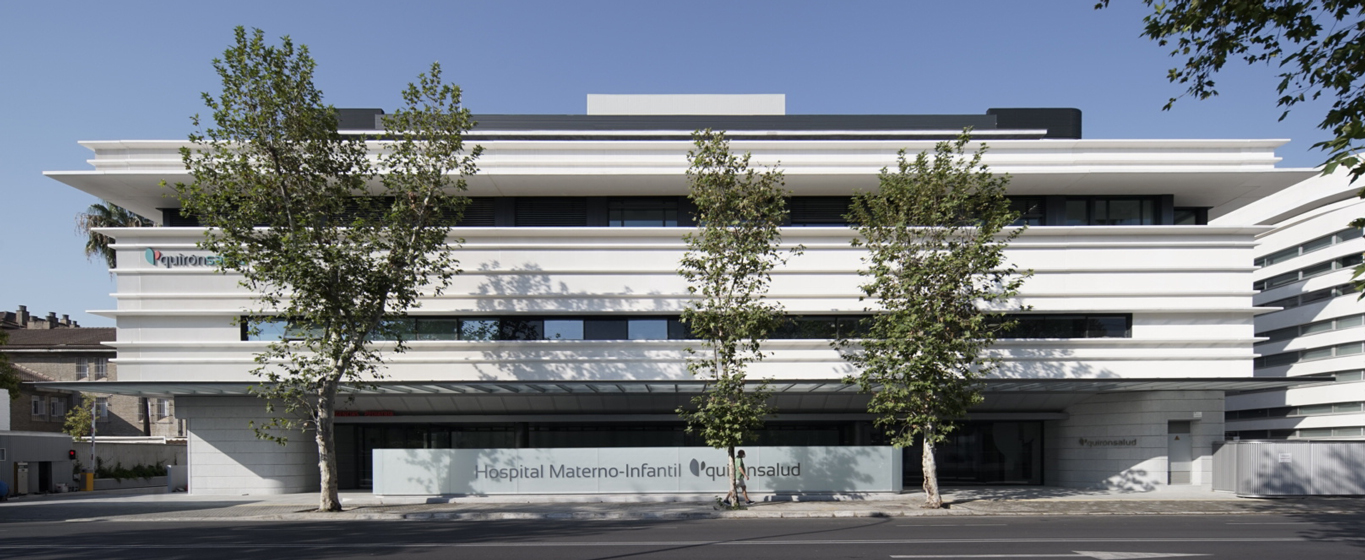Cervical Biopsy
A cervical biopsy is a diagnostic procedure that involves extracting and analyzing a tissue sample from the cervix in a laboratory. The different extraction techniques vary depending on the location and size of the sample, and they may include punch biopsy, endocervical curettage, or cone biopsy.

General Description
A cervical biopsy is a procedure in which a tissue sample is taken from the cervix for microscopic examination.
Depending on the amount of tissue removed and its location, three main techniques are distinguished:
- Punch biopsy: A small sample is taken from the surface of the cervix.
- Endocervical curettage (ECC): Tissue is collected from the upper part of the endocervical canal, the inner portion of the cervix that connects the vagina to the uterus.
- Cone biopsy (conization): A larger sample of cervical tissue is removed.
When is it indicated?
The primary purpose of a cervical biopsy is to detect cancer or precancerous cells in the cervix. A cervical biopsy is usually recommended in the following cases:
- A positive result in a human papillomavirus (HPV) test.
- Abnormal findings in a colposcopy or Pap smear.
- The patient experiences unexplained symptoms such as abnormal vaginal bleeding, persistent pelvic pain, or unusual vaginal discharge.
Additionally, a cervical biopsy is used for monitoring and follow-up of previously treated conditions to assess treatment effectiveness and rule out recurrence.
How is it performed?
Before performing the biopsy, a speculum is inserted to open the vaginal walls. A colposcope, a device equipped with a light and a magnifying lens, is often used. The colposcope is positioned at the vaginal entrance without being inserted and allows for a more precise examination. Additionally, the cervix is cleansed with an iodine or acetic acid solution to highlight abnormal tissues and facilitate their visualization.
- Punch biopsy: A scissor-like instrument with cylindrical blades is used. The instrument is closed to puncture the tissue and collect the sample. Multiple samples are typically taken from different areas of the cervix.
- Endocervical curettage (ECC): The sample is obtained by scraping the area with a spoon-shaped instrument called a curette or with a brush.
- Cone biopsy (conization): A surgical scalpel or laser scalpel is used to remove a larger, cone-shaped portion of tissue. A loop electrosurgical excision procedure (LEEP), which involves a heated wire loop, may also be used.
To analyze the samples, they must arrive without oxidation or degradation. Therefore, they are typically fixed with formaldehyde (CH₂O) and stored in a sealed container. Each tissue portion is cut into thin sections, prepared with stains to enhance the visibility of abnormalities and cellular structures, and placed on a glass slide for microscopic examination.
Risks
Possible complications of a cervical biopsy include bleeding and infection, although these are uncommon.
Cone biopsies, in particular, may damage the muscular fibers of the cervical area, potentially leading to cervical insufficiency (the inability of the cervix to remain closed during pregnancy). This increases the risk of preterm labor or miscarriage. Additionally, cone biopsy can impact fertility by causing cervical scarring, which may obstruct sperm from entering the uterus. However, these complications are rare.
What to expect from a cervical biopsy
Before the procedure begins, the patient must remove clothing from the lower body and put on the provided gown. They may also be asked to empty their bladder.
The biopsy is performed with the patient lying on a gynecological examination table, with legs open and elevated on supports. Discomfort or pain is common when the speculum is inserted, and a slight burning sensation may occur when the cleansing solution is applied. A local anesthetic may be administered to minimize discomfort. If a cone biopsy is performed, regional or general anesthesia is used.
- During a punch biopsy, a slight pinch or tugging sensation may be felt.
- During an endocervical curettage, cramping similar to menstrual pain may occur.
To stop bleeding after sample collection, a topical medication or sutures may be applied.
The procedure typically lasts between 15 and 30 minutes. Once completed, the patient can go home. However, if regional or general anesthesia was used, they must remain in the recovery area until the anesthesia wears off. For the next few days, mild cramping, spotting, or dark discharge is normal. The patient should avoid sexual intercourse and tampon use for a few days (or several weeks in the case of a cone biopsy), rest, and avoid strenuous activities.
Specialties that request a cervical biopsy
Cervical biopsy is requested by the gynecology and obstetrics specialty, and the samples are analyzed by pathology specialists.
How to prepare
In the 24 hours before the procedure, the patient should avoid sexual intercourse, as well as the use of tampons or vaginal creams. If general anesthesia is required, fasting for six to eight hours prior is necessary. The patient must also sign a consent form and inform the doctor about the following:
- Menstruation: If the patient is menstruating at the time of the procedure, it may affect biopsy results. Whenever possible, the biopsy is scheduled one week after the menstrual period ends.
- Pregnancy: A cervical biopsy may not always be performed during pregnancy.
- Acute cervical inflammation or pelvic inflammatory disease: These conditions can reduce the accuracy of the biopsy.
- Use of anticoagulants: These medications may need to be discontinued beforehand, as they increase the risk of bleeding.









































































































